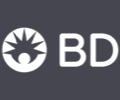Choosing the right IT Outsourcing partner for your business is a critical decision that can greatly affect your operations and growth. It’s necessary to find a partner that will meet your technical needs, but also align with your business objectives and values
Clearly define your IT needs and business goals before you start searching for an outsourcing partner. What specific aspects or projects do you want to outsource? And what are the objectives of this outsourcing process?

Set up a Budget
You need to set up a budget for this IT outsourcing project. Plan for both short term and long term costs, such as initial set-up fees, regular maintenance and possible expansion expenses. A clear budget will help you narrow down your options.
Assess Your Partner’s Expertise
Search for an outsourcing partner having expertise in your particular industry as well as technologies you need. Check their track record in terms of client testimonials, case studies etc. Most importantly check if they have handled similar projects or worked with companies like yours in terms of size and complexity.
Evaluate Scalability
Have in mind the growth prospects of your business and whether the outsourcing company has got scalability of services with it. They must be flexible enough to adapt themselves to any changes required as you grow into new markets.
Consider Communication & Time Zone Compatibility
In communication, efficient collaboration is vital during outsourcing Choose a company with whom you would be able to communicate without any barriers at all times. Travel time differences should also be taken into consideration when choosing among international partners since one should ensure that there is some overlapping working hours so that real-time communication may take place.
Assess Data Security and Privacy
Data protection must be ensured by all means possible. Make sure that while outsourcing, its security features are robust enough including data encryption standards, access controls plus adherence to data protection directives such as GDPR or HIPAA depending on industry sector.
Review Contractual Terms
Read through carefully all contractual terms including service level agreements (SLAs). What is covered by the services, prices and payment conditions as well as termination clauses? Determine if it would be advisable for you to consult a lawyer to ensure that this contract remains fair and equitable.
Check References
Ask the outsourcing partner for references and contact their previous customers. Inquire about their experiences with the vendor, quality of work done, punctuality or time consciousness and overall satisfaction of being in such an arrangement.
Review Exit Strategy
The possibility of termination should also be considered. Consequently, the contract must articulate clear exit provisions which safeguard your data records, possessions and copyrights. Again, ascertain how transfer of knowledge will proceed since transition is required.
Consider Time-to-Market
Evaluate whether the outsourcing supplier could deliver on time or within your desired period on agreement. This may prove significant for your business success especially if you are in high speed industries.
Monitor & Communicate Continuously
After selection of an outsourcing partner has been made ensure there are established channels for regular communication while monitoring its progress closely. Conduct frequent reviews plus feedback sessions to address any emerging issues promptly.
Plan for Long-Term Success
Think beyond just the initial project at hand. The partnership should have potential to grow over time and support long-term success of your business enterprise. Discuss possible growth areas and cooperation opportunities.
Apolis delivers unbeatable Top-tier Outsourcing solutions with excellence. Our team of professionals ensures cost-effective services with high quality that meet your requirements exactly. Count on us because we have excellent process efficiency enabling businesses to remain competitive amidst current market turbulence.






















